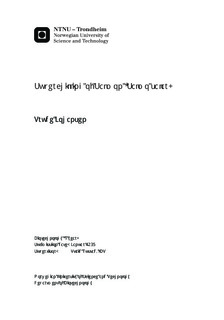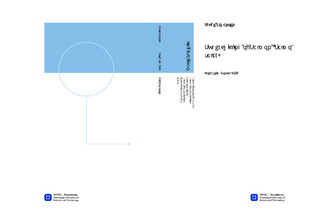| dc.description.abstract | The aim of this thesis was to study discolorations in superchilled muscle food discovered by Duun (2008) The discolorations was found in salmon, pork and cod, and was not microbiological. The hypothesis as that this is a form of drip channels formed by the degradation of the muscle, and two storage experiments were initiated to test this hypothesis with the use of biochemical tests of enzyme activity, protein solubility and microbiology. Analyses of samples of superchilled chicken filets showed low amounts of acid soluble peptides, but with a significant increase during the last days of storage. The amount of free amino acids was low and did not change much during storage. This indicates a relatively low and stable activity of exopeptidases, while the peptidase activity rise slightly as the filets are stored and gets a lower quality. Two storage experiments were carried out with superchilled salmon. The first experiment showed very large changes around day 1 and day 3. The temperature is equalized early on day 0 and the ice formation has stabilized on day 1. There are signs of high increase of protease activity on day 1, and the protein solubility drops with 5% on day 3, before it increase to the previous solubility on day 7. The activity of β-N-acetyl-glycosaminidase also increase in this period.Measurements of ice crystal size was done in parallel to the biochemical analyses showed large differences between the top layer (which is frozen at the start of superchilling) and the middle. In the second storage experiment it was found that the top layer has a larger degree of damage to the cells in the top layer, but the cells in the mid layer had signs of more damage to the organelles. This was especially visible in the higher enzyme activity of both cathepsins and glucosaminidases, which was consistently higher in the mid layer of the filets.The original theory about the white spots that appeared late in the storage period was that they might be drip channels. This is supported by the results from the second storage experiment. It would seem that despite the outer layer being most damaged by the initial freezing, the inside of the filet has a higher damage to lysosomes and other internal organelles, which over time gives a lower quality to the inside compared to the outer parts of the filets. When thawed the inside is more degraded by enzyme activity and thus there is more liquid that need to escape and forces itself through the better quality outer layer. The paleness is probably caused by denatured proteins in the drip, but this needs more research to be confirmed. | nb_NO |

